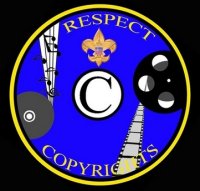Serious Games Summit, Day 2
One of the most thought-provoking papers I saw was Mia Consalvo's "Is it Cheating, Learning, or Both? An Expert Explores the Boundaries of Cheating & Learning in Videogames," which asserts that beliefs don't necessarily reflect practices, given the fact that every gamer cheats. Of course, I liked the fact that she opened her paper with the issue of academic plagiarism. I must admit, however, that I would have liked to have heard her talk a bit about how ideas of justice play into cheating ideology. I have a ten-year-old who has been searching for cheat codes after designing a beautiful home for his family to move into, close to the university so it would be convenient for me, and then being crestfallen when he discovered that his parents couldn't move in to the house, if he gave them their real-world jobs. (He doesn't want to cheat in fantasy games, only in real world simulations in which life is manifestly not fair.) Consalvo has a book forthcoming from MIT Press, which I'll review here as soon as it's out.
Then I saw how the female tweens in Whyville had a thriving economy based on clams, which largely depended on the sale and manufacture of face parts. Although Chief Visionary Officer James M. Bower didn't talk about "Constructivism" per se, as the title of his talk promised, he did give an excellent rundown on the virtual government, newspaper, public nutrition service, science research, automotive industry, and even disease control agency that operate with considerable amounts of user-generated content. If there were ever an argument against DOPA and dismissing the value of social networking sites, it's Whyville.
Although it wasn't as interesting as learning about the WhyPox, I did enjoy the presentation of Kevin Q. Harvey from the University of Chicago School of Public Health who explained the rationale behind "Zero Hour," an anthrax simulation for medical professionals with a low-bandwidth Flash platform and design flexibility to adapt to using mobile devices to maximize authenticity in group interactions and simultaneity in experiencing real time events. As a poll-worker this year, I thought it interesting that the fake news broadcast said that Chicagoans should report to their polling places to receive vaccinations. That'll show the people who don't vote!
Excellent live blogging from Ian Bogost is here.
Labels: conferences, MIT Press, serious games













